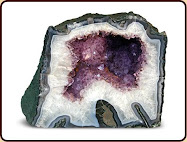My husband and I moved into our new home last November (2009). The house is about 30 years old and the previous owners did a great job renovating the place to make it more current. But we found that the wood-burning fireplace was a bit dated and decided to give it a quick and easy makeover (who doesn't love a makeover!).
Here is a before photo of the fireplace...this photo was taken on moving day hence the copious amount of "stuff", but you get the gist:
There were really two options for us and the first one was the most expensive being a complete overhaul of the entire surround. Which meant tearing down the bricks, rebuilding the structure and tiling...all of that meant a ton of dust, blood, sweat and tears, so my second option sounded much more appealing.
Here is what we did:
- The top half of the fireplace was covered in MDF (Medium Density Fiberboard). This surround covers the brick from the mantle all the way up to the ceiling and of course around the sides meeting up with the walls on both sides.
- Molding was added to the center of the MDF surround to create architectural detail.
- The mantle itself got a fresh coat of paint. I decided to paint as oppose to stain as there were some inconsistencies with the wood grain and I'm not a huge fan of oak to begin with.
- The bottom surround got a fresh coat of paint. The brick was painted from the underside of the mantle all the way down to the wood floors.
- The fireplace insert gets to stay flat black and yes, the brass trim was removed. We have yet to decide if we want to paint it black and return it or leave it without.
Here is a photo of our work in progress:
As you can see above the MDF has been attached to the top half of the fireplace. We used PL Premium to adhere the MDF to the brick. As this is a wood-burning fireplace attaching anything to the brick which would require drilling is a fire hazard. We were assured by the fellow at the local Home Depot that PL Premium would hold an "elephant to an airliner" - I kid you not, that is what he said!!
If you are not handy with a saw your local box hardware store will cut the MDF to the sizes you specify. Just remember, measure twice and cut once.
We filled in the gaps (as nothing is truly square) with paintable caulking - this is the white you see in the photo. We also used PollyFilla which requires sanding, this stuff is handy if you don't have a steady hand for the caulking.
The trim/molding which you can see on the floor, was cut to size and adhered to the upper surround with PL Premium. Again no nailing as this is a wood-burning fireplace and we didn't want to run the risk of a fire...well one that wasn't contained to the fireplace itself!!
Here is the finished product:
What a difference!!! We are so pleased with the new look of our fireplace and believe me, this transformation was very cost-effective with mega impact!
The paint we used on the lower-half of the surround was specially designed for brick and adobe exteriors which can withstand the heat of the desert sun. We figured if it could withstand that it could easily withstand a fireplace. Plus the fellow at the local hardware store assured us that this has been used previously on wood-burning and gas fireplaces without any issue, so we did feel more at ease knowing this.
The paint colours in the photo look very black and white, but I assure you this is only a camera trick. The mantle piece is painted in Behr Premium Plus Ultra (this is the paint and primer in one) French Roast. The surround was painted in Behr Premium Plus Ultra Apple Core. We were able to have the special brick paint colour matched to Apple Core.
We LOVE, LOVE, LOVE our new fireplace and it really opens up the room! So don't be afraid to take the plunge and tackle a less than appealing fireplace in a weekend. That is really how long it took us to start and finish this project...mind you, the house cleaning took a hit that weekend, but it was worth it!
Happy DIY-ing!

























